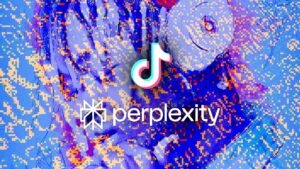
Last week, X, formerly known as Twitter and now owned by Elon Musk, faced a major crisis when AI-generated explicit deepfake images of Taylor Swift went viral on the platform. The incident exposed X’s shortcomings in content moderation, leading to a temporary ban on the search term “taylor swift.”
Incident involving AI-generated deepfake images of Taylor Swift on X (formerly Twitter) highlights significant challenges in content moderation on social media platforms. Here are some points to consider regarding what X (and other platforms) could have done differently and potential improvements in content moderation:
Invest in Robust Content Moderation Infrastructure:
Social platforms, especially those dealing with a massive user base, should invest heavily in advanced content moderation infrastructure. This includes both AI-based tools and human moderators to detect and remove inappropriate content promptly.
Proactive Measures Against Deepfakes:
Develop and implement proactive measures to detect and prevent the spread of deepfake content. This involves using advanced algorithms to identify potentially harmful content before it goes viral.
Transparency in Decision-Making:
Improve transparency by providing users with more information about decisions regarding their accounts or reports. Users should have access to case records and understand the rationale behind content moderation actions taken by the platform.
Direct Communication with Users:
Establish more personalized and direct communication channels between the platform and users, particularly in cases of abuse. Swift and effective communication can help address concerns and provide support to those affected.
Community Empowerment:
Empower user communities to take actions against abusive content. In the absence of quick and effective moderation, user-driven initiatives, as seen in the case of Swift’s fanbase flooding search results, can play a role in mitigating harm. Taylor Swift’s fanbase took matters into their own hands, flooding search results to make it harder for users to find the offensive images. This failure in content moderation became a national news story, raising concerns about the platform’s ability to protect even high-profile individuals.
Swift Response to Crises:
Develop crisis response mechanisms that allow platforms to react swiftly to emerging issues. In the case of X, the delayed response and subsequent ban on search terms might not have been sufficient to address the severity of the situation.
Increased Moderation Workforce:
In response to such incidents, platforms should consider scaling up their moderation teams. The addition of 100 content moderators, as announced by X, is a step in the right direction, but the effectiveness of this initiative remains to be seen. The platform announces plans to hire 100 content moderators for a new “Trust and Safety” center in Austin, Texas. However, concerns are raised about the platform’s track record under Elon Musk’s leadership.
Collaboration with AI Developers:
Social media platforms should collaborate closely with AI developers and continuously update their models to address vulnerabilities. In the case of deepfakes, working with developers like OpenAI and Microsoft is crucial to enhancing safety measures.
Accountability for AI Creators:
Hold companies accountable for the safety of their AI products, and ensure transparency in disclosing potential risks. The responsibility for abusive deepfakes isn’t solely on social platforms but also on companies that create generative AI products. The incident involving Microsoft Designer and DALL-E 3 underscores the need for responsibility in AI development and usage.
Vulnerabilities in AI Models:
A Microsoft engineer, Shane Jones, claims to have found vulnerabilities in DALL-E 3 and urged OpenAI to suspend its availability. OpenAI disputes this claim and states that its safety systems were not bypassed.
Public Discourse on AI Ethics:
Foster a public discourse on AI ethics, including discussions on the responsible use of AI-generated content. Engaging with the public and experts can help shape policies and guidelines that protect individuals from malicious uses of technology.
Taylor Swift fiasco highlights the urgent need for social platforms to revamp their content moderation strategies and for AI creators to prioritize safety measures in their products.










